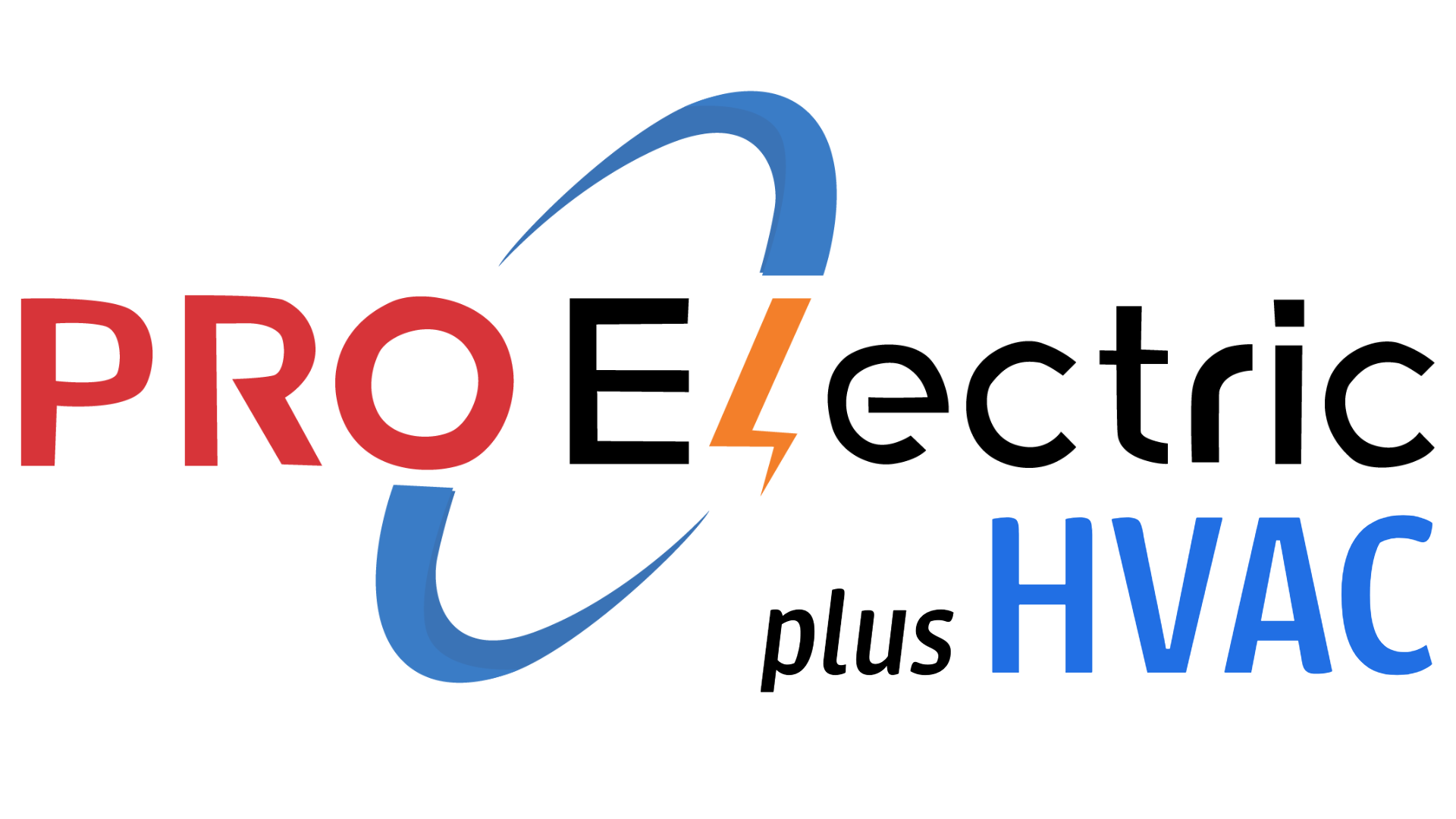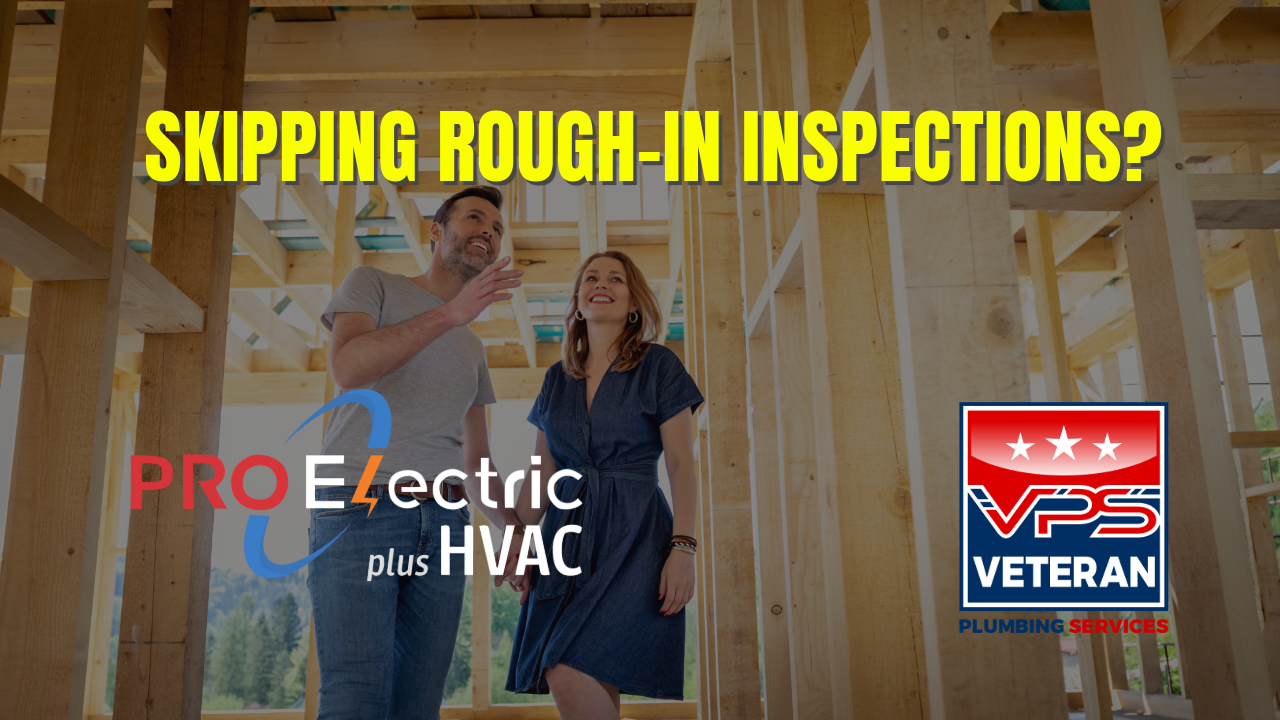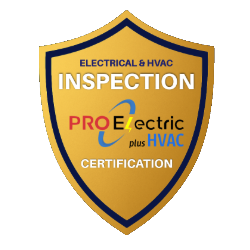This is Peter from PRO Electric plus HVAC addressing homeowners and contractors in Northern Virginia about rough-in inspections for electrical and plumbing work.
I want to talk to you today about something critical for homeowners and contractors here in Northern Virginia: rough-in inspections for electrical and plumbing work.
Skipping inspections to cut corners could appear beneficial initially, but will likely result in serious issues.
This discussion will explore why these inspections are essential and how you can prevent problems by executing them correctly.
Electrical Rough-In Inspection Challenges – From My Electrician’s Point of View
As an electrician, I can tell you firsthand that the electrical rough-in inspection is a crucial step. In Northern Virginia, we’re bound by the National Electrical Code (NEC) and our local regulations, and for good reason.
Without this inspection, a lot can slip through the cracks and cause problems.
Code Compliance Issues – It’s Not Just Red Tape
Skipping this inspection is practically inviting code violations. We see it all the time. Without a proper rough-in inspection, things like:
- Improper wire gauges: It’s a major no-no to use the wrong wire size for the amount of electricity a circuit needs to handle.
- Inadequate cable anchoring and protection: Wires must be secured and protected from damage.
- Insufficient wire length in electrical boxes: Not leaving enough wire in boxes makes connections difficult and unsafe.
- Incorrect placement of outlets and fixtures: Where you put outlets and lights isn’t just about convenience, it’s about safety and code.
I remember a recent job where a homeowner failed their final inspection because outlets weren’t placed correctly near a sink, they needed to be within two feet, and they weren’t. It’s these kinds of details that rough-in inspections catch before everything is covered up.
Safety Hazards – We’re Talking Real Risks
This isn’t just about passing inspection; it’s about safety. Uninspected electrical work can be downright dangerous:
- Fire hazards: Improper wiring is a leading cause of electrical fires.
- Electrocution risks: Exposed wires or faulty connections can be lethal.
- Overloaded circuits: Pushing circuits beyond their capacity can cause system failures and fires.
Concealment of Substandard Work – Hiding Problems Doesn’t Make Them Go Away
The beauty of the rough-in inspection is that it happens before we close up the walls.
This is our chance to catch any shoddy work before it’s hidden.
Skip this step, and you might be burying problems that will be much harder and more expensive to fix later.
Plumbing Rough-In Inspection Challenges – What I See as an HVAC Pro
While PRO Electric plus HVAC specializes in electrical and HVAC, we work closely with our preferred partner, Dennis at Veteran Plumbing Services, and they see the same issues on their side with rough-in inspections.
It’s just as critical for plumbing.
Structural Integrity Concerns – More Than Just Leaks
Plumbing rough-in inspections are about making sure pipes are installed right so they don’t mess with the bones of your house. Skipping this can lead to:
- Water damage: Leaky pipes inside walls or under floors can rot wood and cause mold.
- Weakened foundation: Improper drainage can actually undermine your foundation over time.
Code Violations – Plumbing Codes are There for a Reason
Just like electrical, plumbing in Northern Virginia has its own set of codes. Without a rough-in inspection, you could easily miss violations like:
- Improper venting: Vents are crucial for proper drainage and preventing sewer gases from entering your home.
- Incorrect pipe sizing: Using the wrong size pipes can lead to clogs and backups.
- Inadequate slope for drainage: Pipes need to slope correctly for gravity to do its job and carry waste away.
Sanitation and Health Risks – Think About Your Water
Plumbing isn’t just about convenience; it’s about health. Uninspected plumbing can create some nasty situations:
- Cross-contamination: Imagine clean drinking water mixing with wastewater – that’s a health nightmare.
- Improper sewage disposal: This can lead to environmental problems and health hazards.
- Backflow issues: Contaminated water flowing back into your clean water supply is something you definitely want to avoid.
Legal and Financial Consequences – The Pain You’ll Feel Later
Beyond safety and health, skipping rough-in inspections can land you in some serious hot water legally and financially.
Permit Issues – Playing by the Rules Matters
Often, skipping inspections means skipping permits altogether. This is a big mistake that can lead to:
- Legal penalties and fines: Local authorities don’t take kindly to unpermitted work.
- Difficulty selling your property: Unpermitted work is a red flag for buyers and can complicate or even kill a sale.
- Cease occupancy orders: In extreme cases, the authorities could shut down a building with unpermitted and unsafe work.
Insurance Complications – Don’t Count on Coverage
Think your insurance will cover you if something goes wrong with uninspected work? Think again.
- Denied claims: Insurance companies can and often will deny claims for damages caused by work that wasn’t properly inspected and permitted. You’ll be left holding the bag financially.
Costly Corrections – Pay Now or Pay Way More Later
Discovering code violations after the walls are closed up is a homeowner’s worst nightmare. Get ready for:
- Demolition costs: Opening up finished walls, ceilings, or floors to fix problems is expensive and messy.
- Re-inspection fees: You’ll have to pay for inspections all over again after the corrections are made.
- Bringing systems up to code: You’re on the hook for all the costs to bring everything up to current code standards.
Impact on Property Value – Your Home is an Investment
Uninspected work can seriously hurt your property value:
- Decreased market value: Buyers will be wary of properties with a history of unpermitted or uninspected work.
- Difficulty obtaining mortgages: Lenders may be hesitant to finance a property with known code issues.
- Extended time on the market: Disclosure requirements mean you have to tell potential buyers about uninspected work, which can scare them off or lead to lower offers.
Conclusion – My Advice as PRO Electric plus HVAC
Look, I get it. Inspections can seem like a hassle. But skipping rough-in inspections for electrical and plumbing in Northern Virginia is just not worth it.
The short-term “convenience” is absolutely dwarfed by the potential legal problems, financial hits, and, most importantly, safety risks.
As PRO Electric plus HVAC, we always prioritize doing things the right way, which includes rough-in inspections.
It protects you, it protects us, and it ensures the quality and long-term value of your home.
Don’t cut corners on something as critical as your electrical and plumbing systems.
It’s just not a smart move.
If you have any questions about this, or need help with electrical or HVAC work in Northern Virginia, contact us today!



